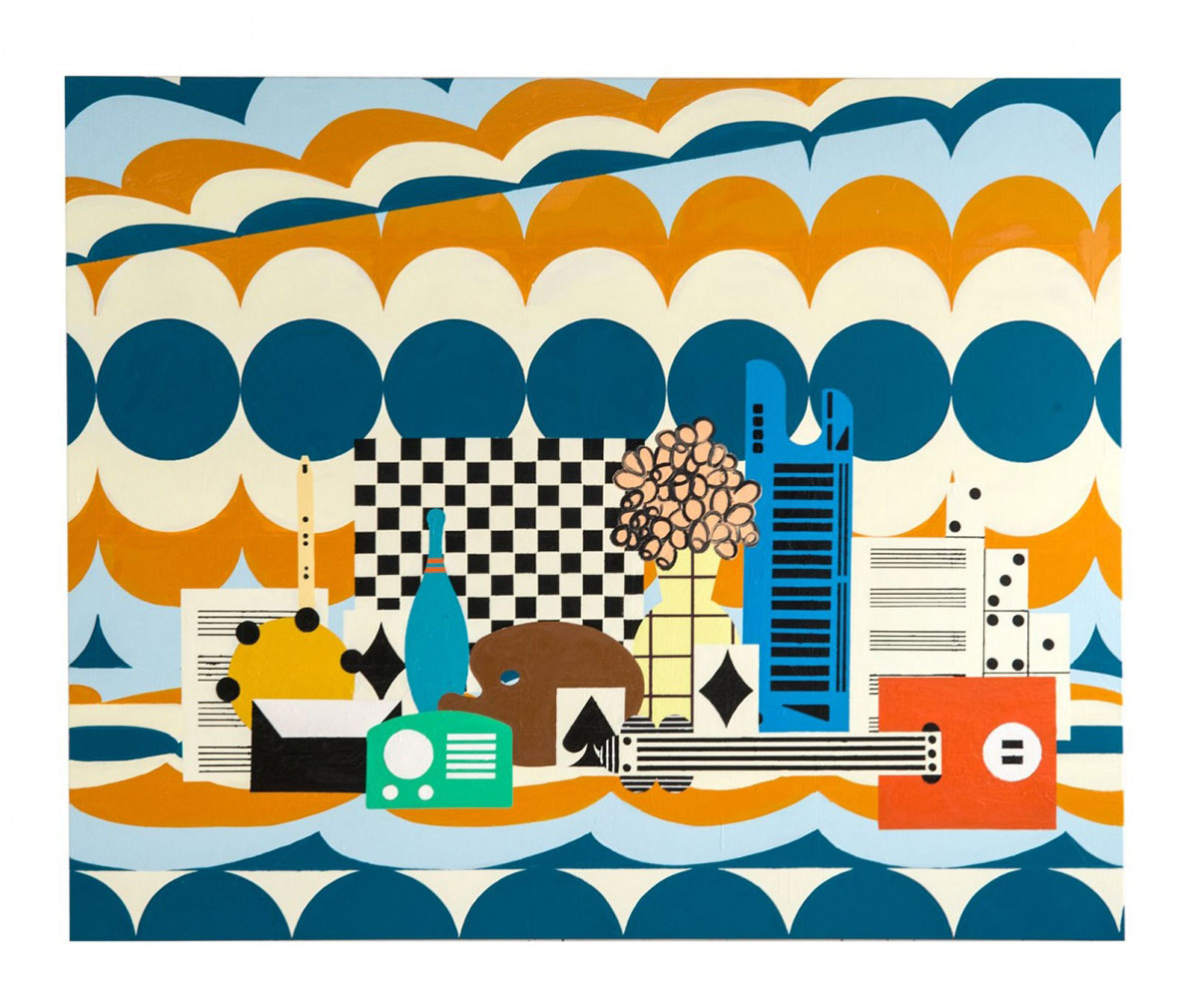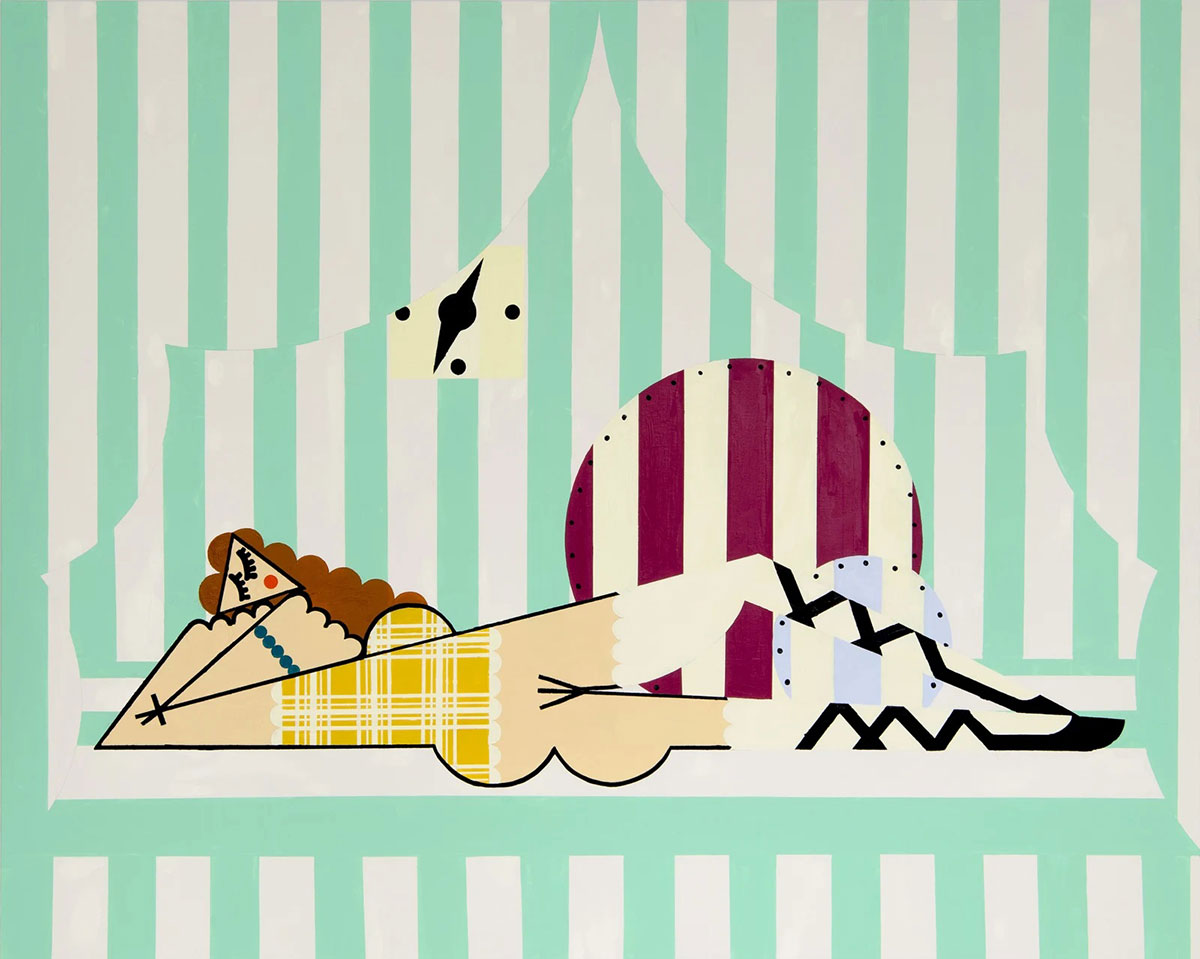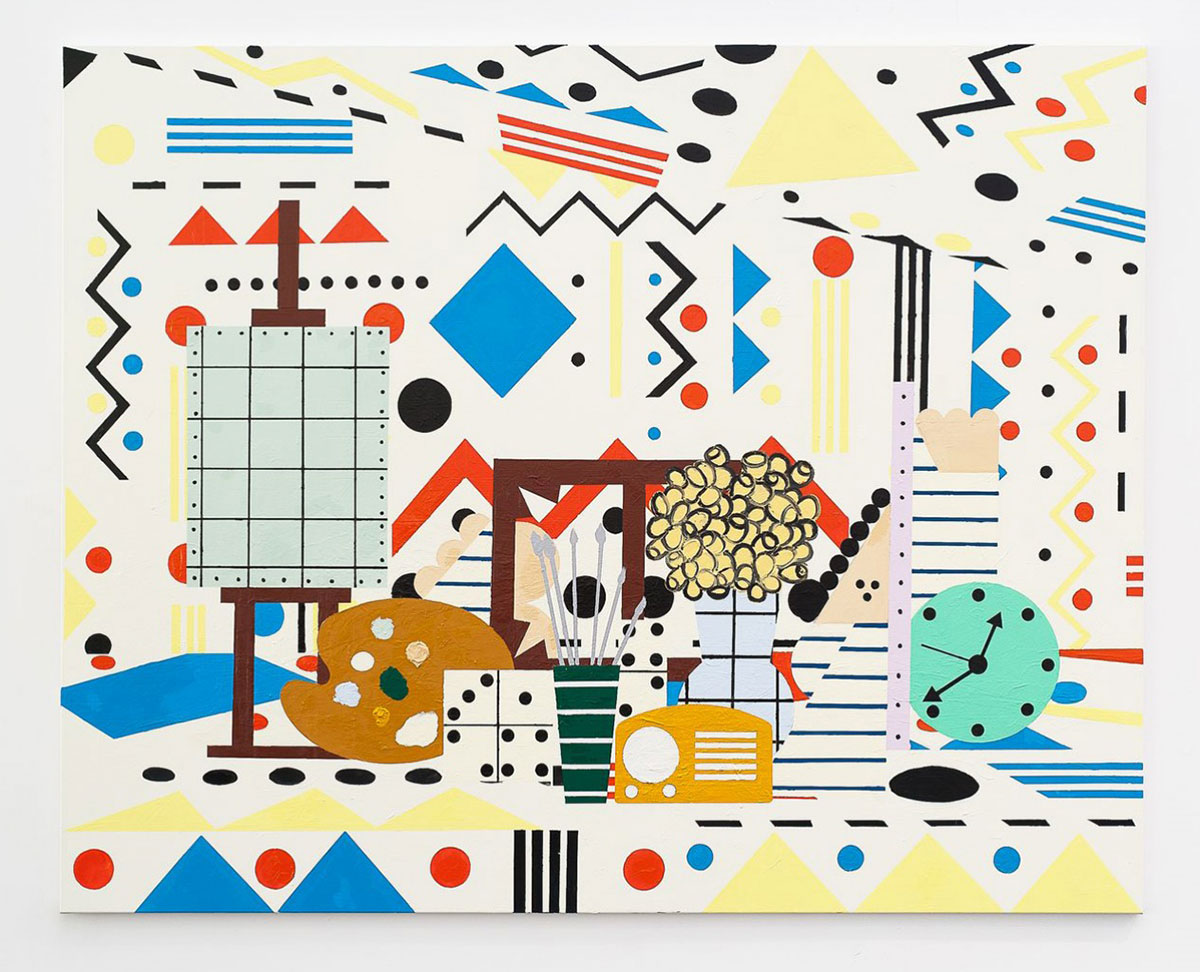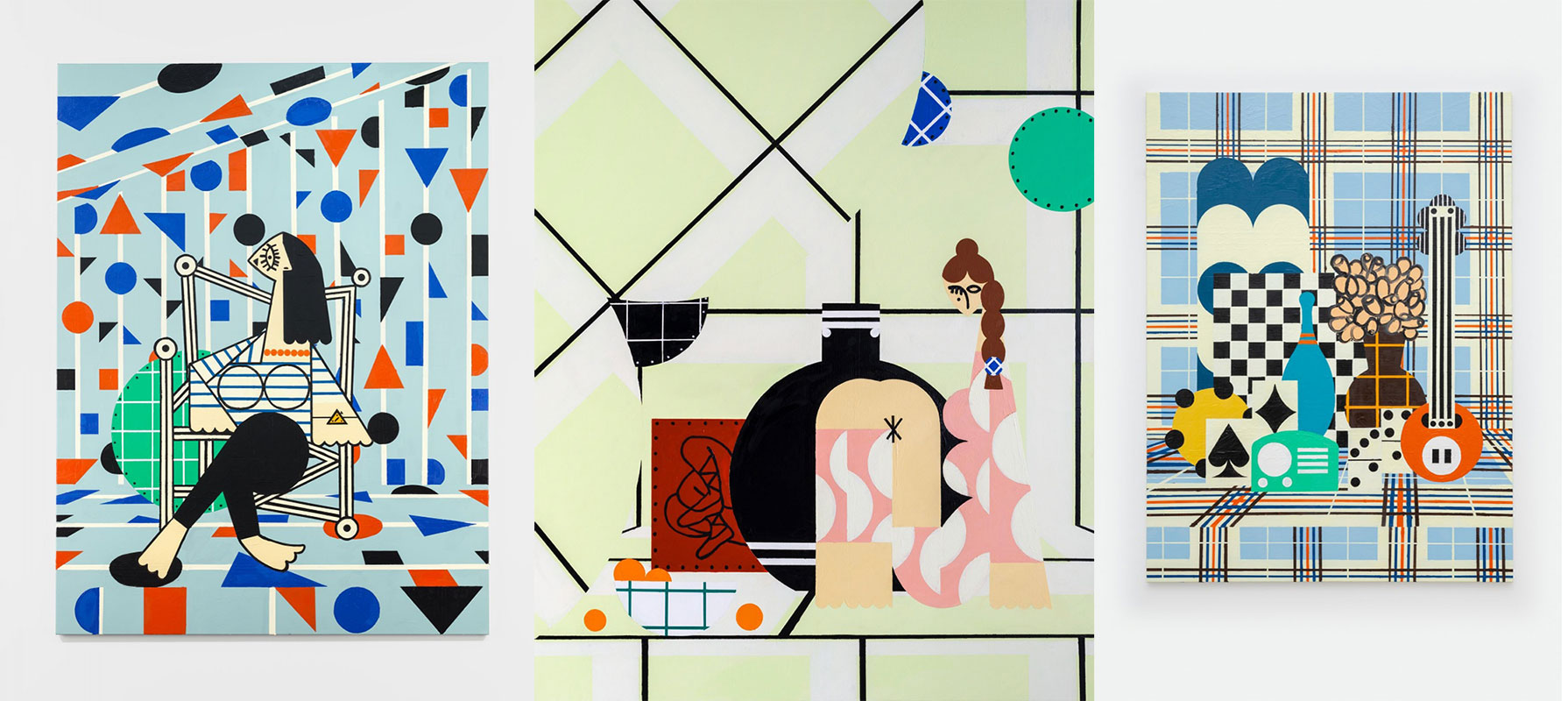PREVIEW: Farah Atassi-Resting Dancers
 Farah Atassi paints interiors associated with the industrial world from the 1930s to the beginning of the 1970s. Her paintings often include references to modernism in the form of objects located in the depicted space, things like models of industrial landscapes, children’s toys and furniture. The empty interiors are in sense inhabited by these objects whose status is equivocal in as much as they are artistic references, which are also evocative of workers’ lives. In some works they are installed, like the displays, or simply piled up. In others, they are tools that no longer fulfill their function.
Farah Atassi paints interiors associated with the industrial world from the 1930s to the beginning of the 1970s. Her paintings often include references to modernism in the form of objects located in the depicted space, things like models of industrial landscapes, children’s toys and furniture. The empty interiors are in sense inhabited by these objects whose status is equivocal in as much as they are artistic references, which are also evocative of workers’ lives. In some works they are installed, like the displays, or simply piled up. In others, they are tools that no longer fulfill their function.
By Efi Michalrou
Photo: Almine Rech Gallery Archive
The history of modern art is full of famous images of dancers in motion and at rest – from Renoir to Degas, from Matisse to Léger. Dancers resting on stage during a performance, however, are rare. In Farah Atassi’s work, the curtain is raised, yet the dancers are motionless: no arabesques, entrechats or dégagés, only languor and repose. In Farah Atassi’s solo exhibition “Resting Dancers”, the dancers are at rest, sometimes even asleep, on a stage with a half-open curtain, not for some ballet but for other art forms. The clock in “Dancer at the Studio I” reads 11:34, the dancer sits on a stage, revealing her intimacy to the spectator. Next to her, a vase covered with orthogonal lines holds a lush pilea plant, a blank canvas and a frame completing the decor. Are the painting materials waiting to be used, to be covered with a grid, like the black and pink one on the open curtain, defining the studio space that has become the stage for a spectacle? In “Dances at the Studio I”, the palette hanging on the wall like a painting also seems to be resting. The dancer is sitting in the middle of a tiled surface, surrounded by vases, flowers, and some oranges. As in the first version, the play of lines produces a skillful perspective drawing, as if the figure, the dress, and the ribbons on the slippers were trying to merge with the decor and the background of the painting. They all want to play the same role: form becoming spectacle. What better way to stage form than through a background grid ? “In the early part of this century (the 20th) there began to appear, first in France and then in Russia and in Holland, a structure that has remained emblematic of the modernist ambition within the visual arts ever since. ” According to Rosalind Krauss, the grid has had a triple success: “a sheerly quantitative success, involving the number of artists in this century who have used grids; a qualitative success through which the grid has become the medium for some of the greatest works of modernism; and an ideological success, in that the grid is able – in a work of whatever quality – to emblematize the Modern”. While the grid has become the symbol of an anti-narrative bias and a formal purism refusing meaning and depth, in Farah Atassi’s paintings it becomes a podium of form, reminiscent of Lucinda Childs’ dancers reclining on Sol LeWitt’s grids in “Dance” Farah Atassi is a Belgian-born, Paris-based artist who was born to Syrian parents. The artist attended the Ecole des Beaux-Arts where she studied art history; when she first graduated in 2005, Atassi created bare interior landscapes and generic spaces such as bathrooms and kitchens. The paintings were recognized by grids that organically emphasize the perspective of spaces and describe utilitarian stonework and tile. The splashes of color that Atassi interjects have a way of reinventing the spaces into a completely different realm. Atassi’s energetic works mix colorful patterns and motifs that are inspired by several different areas: modern masters, Jazz Age, and Islamic textiles. In addition, the artist uses geometry at the base of all her works in order to delineate classic subjects such as still lifes and female nudes. In 2017, Atassi did a series of paintings that explored nudes… however, these paintings were vastly different than more recognized nudes since Atassi never paints live models. She says (courtesy of Galerie Magazine), “I like to do samplings. I take a leg here, I take a head there, and then I invent. I don’t really care about reality”. Atassi uses just a few shapes in each work; perhaps a circle, a triangle, or a line. With these abstract shapes, she creates her scenes and her work transforms into a figurative painting. The shapes are essentially the building blocks for her work. Atassi likens this part of her work to a theater set… a background is in place on the “stage” and then figures (or compositions) are inserted with a grid that slowly becomes the music. The final step is to connect the figures and the background so that they are “engaged” in a sort of melody together.
Photo: Farah Atassi, Still Life with Palette and Roses, 2018, Oil and enamel on canvas, 180 x 220 cm, 70 7/8 x 86 5/8 inches, © Farah Atassi, Courtesy the artist and Almine Rech Gallery
Info: Almine Rech Gallery, 27 Huqiu Road, 2nd Floor,, Shanghai, China, Duration: 15/4-14/5/2022, Days & Hours: Tue-Sat 11:00-19:00, www.alminerech.com



Center: Farah Atassi, After the Show, 2021, Glycero and oil on canvas, 200 x 160 cm, © Farah Atassi, Courtesy the artist and Almine Rech Gallery
Right: Farah Atassi, Still Life with Radio, 2018, Oil and enamel on canvas, 130 x 97 cm, 51 1/8 x 38 1/4 inches, © Farah Atassi, Courtesy the artist and Almine Rech Gallery
